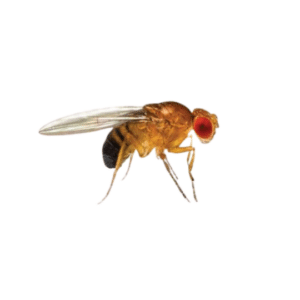
Fruit Fly

Navigating the World of the Fruit Fly
The fruit fly, a familiar yet small insect, often invades households. These tiny creatures, frequently seen around overripe fruits, quickly reproduce and adapt to various environments. Let’s dive into the fascinating world of the fruit fly, highlighting their habitats, life cycle, and effects on our surroundings.
Known scientifically as Drosophila melanogaster, fruit flies are common in homes, grocery stores, and fruit markets – essentially anywhere with food processing. They gravitate towards ripe, fermenting fruits and vegetables, making these locations ideal breeding grounds. Additionally, their preference for moist environments often leads them to inhabit kitchens.
While fruit fly larvae primarily feed on overripe or fermenting fruit, adults seek sweet, organic materials. You can also find them in drains, garbage disposals, and even in empty bottles and cans, feeding on organic residues.
These insects are tiny, about 3mm in length, with red eyes and a brownish body. Their small size belies a complex anatomy, complete with a well-developed reproductive and sensory system.
From Egg to Adult
Fruit flies exhibit an efficient reproduction process. Females lay eggs on fermenting fruit surfaces, which hatch into larvae feeding on the same material. This rapid cycle, transforming from egg to adult, often completes within just a week.
A fruit fly’s life cycle includes egg, larva, pupa, and adult stages. This quick transition, potentially just a week under optimal conditions, is why they can quickly become problematic in homes and businesses.
Small Pests, Big Impact
Often seen as mere nuisances in homes and businesses, fruit flies don’t typically cause significant environmental damage. However, they can contaminate food with bacteria and other pathogens in large numbers. While not known to bite or sting, they can still transport pathogens from breeding sites to food and surfaces.
Fruit flies become invasive with suitable environments and ample food. They multiply rapidly in homes and businesses, potentially leading to large infestations if unchecked.
Typically entering homes through open windows, doors, or even on grocery-bought fruits and vegetables, they quickly locate breeding sites to multiply. Commonly, you’ll find them in kitchens and dining areas, particularly around overripe fruits and fermenting vegetables. Preventing infestations hinges on regular cleaning and proper food storage.
Conclusion
Comprehending the behavior and life cycle of the fruit fly is key to managing and preventing infestations in homes and businesses. Maintaining cleanliness, especially in areas where food is stored and prepared, is vital for keeping these pests at bay. While fruit flies are commonly encountered nuisances, effective management is possible with proper hygiene and preventive measures. Stay tuned to our blog for more pest control insights and tips.

